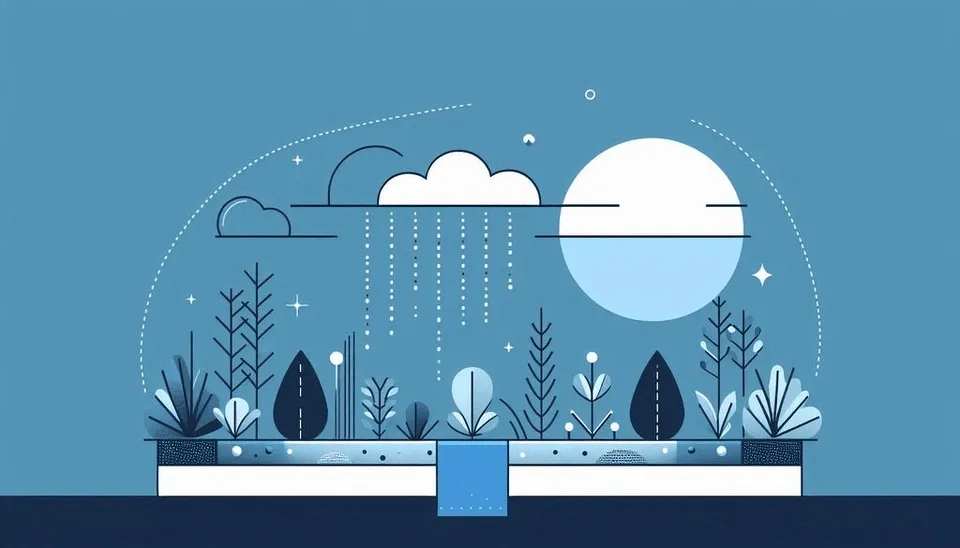
What are the most effective techniques for managing stormwater in urban areas, and how can they be implemented to create more sustainable and resilient cities? Urban areas are at risk of experiencing flooding, erosion, and water quality issues due to climate change and population growth. To address these challenges, there has been a growing interest in developing new approaches to urban water management. In this article, we will discuss several green and sustainable techniques for managing urban stormwater (Everett et al., 2015; Fletcher et al., 2015).
Method | Application | Advantages |
Rain Garden | Residential, Commercial, Institutional, Roadsides | - Attenuates stormwater peak runoff rates. - Infiltrates up to 90% of annual rainfall. - Improves the quality of stormwater runoff. |
Bioswales | Roadsides, Parking lots, Green spaces | - Effectively captures and treats stormwater runoff. - Enhances pollutant removal. - Provides natural habitat and aesthetic benefits. |
Permeable Pavement | Parking lots, Sidewalks, Roads | - Allows water infiltration, reducing runoff. - Reduces heat island effect. - Reduces the need for conventional stormwater infrastructure. |
Green Roofs | Commercial, Residential, and Industrial Buildings | - Reduces stormwater runoff. - Improves air quality. - Reduces energy consumption. - Provides green space and thermal insulation. |
Rainwater Harvesting | Residential, Commercial, Agricultural | - Captures and stores rainwater for later use. - Reduces demand on municipal water supply. - Can be used for irrigation and non-potable purposes. |
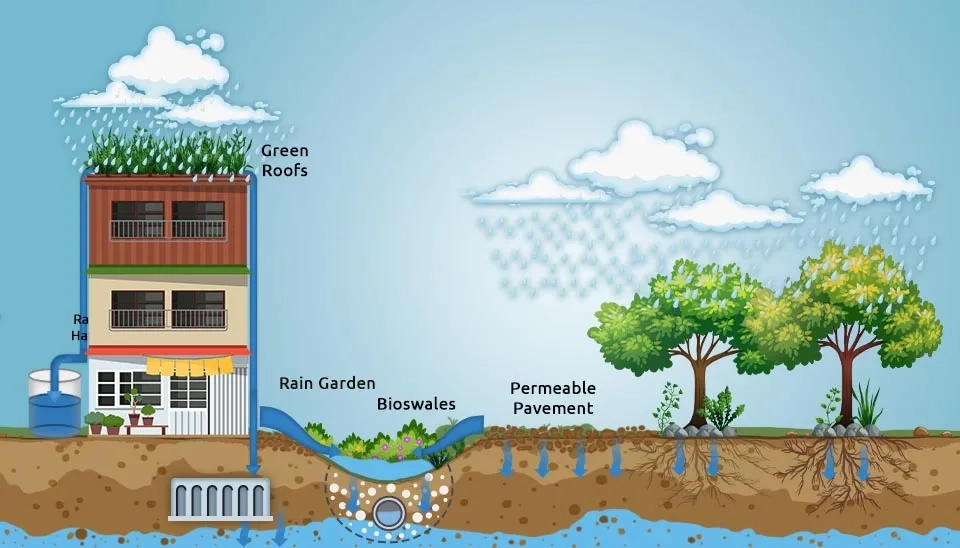
1. Common Urban Stormwater Management Techniques
Stormwater management combined with urban design can be the best solution to minimize urban flooding risks and promote a clean natural environment. Several approaches and techniques could be applied, from Best Management Practices (BMPs) and Green Infrastructure (GI) to Low Impact Development (LID), to manage stormwater in urban areas. Some of the most common sustainable stormwater management techniques are introduced in the following.

1.1. Rain Garden
Rain gardens are innovative urban stormwater management systems, planted with deeply rooted native plants and grass, strategically designed to capture and absorb runoff from concrete surfaces, such as roofs, driveways, parking lots, sidewalks, and streets. It can be constructed directly in the ground or in specific containers with different capacities. Rain gardens are effective low-impact development (LID) practices that are used in residential areas to capture stormwater runoff, recharge groundwater by infiltration, and remove pollutants (such as phosphorus) from the water before it enters local streams (Morash et al., 2019). A rain garden with a more complex structure, equipped with a drainage system and altered soil, is often referred to as a bioretention (Bąk and Barjenbruch, 2022).
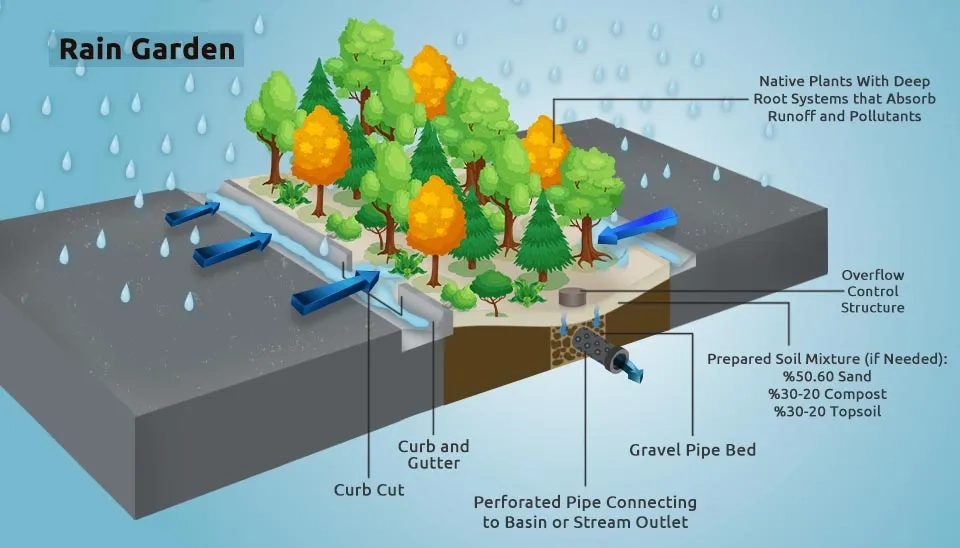
1.1.1. Applications
Rain gardens are important alternative methods of stormwater management. They are also classified as devices used for sustainable rainwater management. Firstly, they help mitigate the adverse impacts of stormwater runoff by reducing the volume of rainwater runoff from the catchment area. By capturing rainwater, the peak water flows in the sewage system will be reduced, which is of importance in preventing the hydraulic overload of a sewage network. Rain gardens reduce the effects of climate change in the city. They can even improve the habitat for wildlife and preserve natural vegetation and biodiversity (Shafique and Kim, 2017). The use of rain gardens can help create health-promoting places, which contributes to human health (Trojanowska, 2020; Bąk and Barjenbruch, 2022).
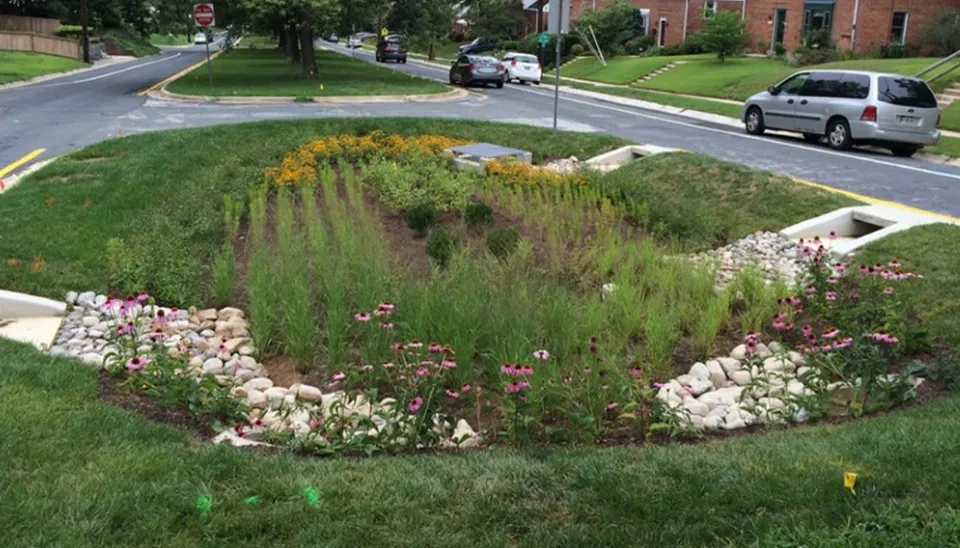
1.1.2. Advantages
Rain gardens are referred to as small, shallow, and sunken areas of planting that offer several environmental, social, and financial benefits. Rain gardens allow 30% more water to soak compared to traditional lawns. Rain gardens are becoming more popular, particularly due to the need for cities to adapt to the impacts of climate change. The human health benefits of using these gardens include enhancing urban aesthetics that provide visually appealing landscapes (Siwiec et al., 2018). Rain gardens are important solutions in green infrastructure, mainly due to the ease of their implementation and relatively low costs. Using rain gardens will promote a greener and more sustainable environment in urban areas, and at the same time, it will help governments and urban residents better manage stormwater.

1.2. Bioswales
The most commonly used facilities in urban areas are known as the bioswale (ditch) which moves stormwater from one area to another, in addition to filtering out sediment and pollutants. Bioswales are a popular green infrastructure tool for managing stormwater runoff and improving water quality and are part of the practice of LID. (Liu and Jensen, 2018). The water from a house can also be transported to a rain garden via a bioswale. These linear, shallow channels with gently sloping sides are typically filled with a combination of vegetation, engineered soils, and various filtering materials. Bioswales effectively mitigate the adverse impacts of urbanization on water quality and quantity (Ellis and Bettin, 2022).
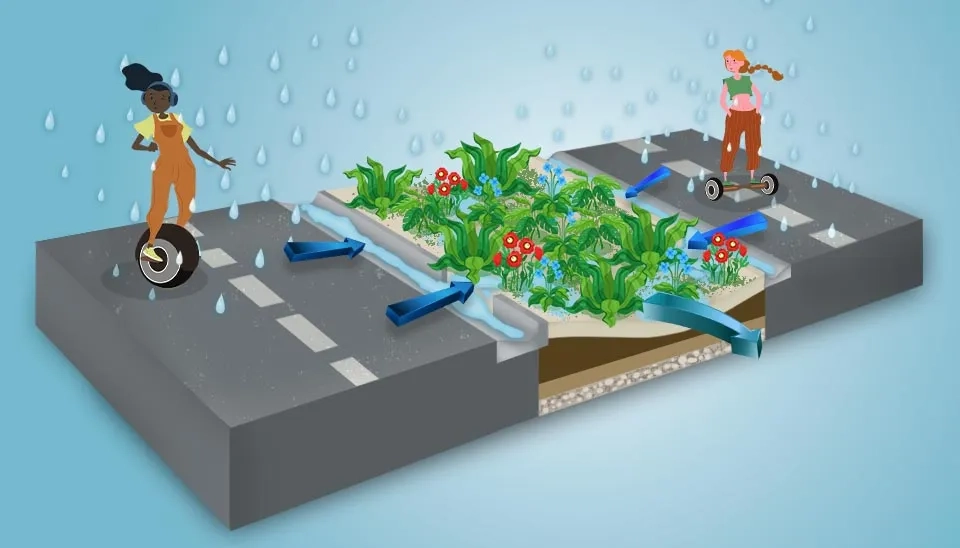
1.2.1. Applications
Green drainage facilities, particularly bioswales, can mitigate runoff and improve microclimates by altering the flow path of water and thermophysical surface indicators. Bioswales are vegetated ditches that use natural processes to slow and treat stormwater as it infiltrates through the soil. The vegetation in bioswales can also help to remove pollutants from the stormwater through processes such as uptake, sedimentation, and filtration (Zhou et al., 2021). Bioswales find application in various urban settings to manage stormwater runoff sustainably and environmentally friendly. These systems are commonly installed along roadways, parking lots, and other impervious surfaces with a high potential for runoff. The bioswale vegetation plays a crucial role in pollutant removal, as plants uptake nutrients and contaminants (Quian et al. 2022).
1.2.1. Advantages
Bioswales offer a significant number of advantages ranging from environmental and hydrological to aesthetic ones. On the one hand, they significantly reduce surface runoff volume by promoting infiltration, thus mitigating the risk of urban flooding. On the other hand, bioswales promote the quality of water through natural filtration mechanisms that remove sediment, nutrients, heavy metals, and other pollutants before it reaches receiving bodies. Moreover, in addition to their functions in water management, they play a vital role in enhancing biodiversity in cities by providing habitats for plants and animals. In addition, their vegetated surfaces improve local microclimates by affecting surface temperatures and evapotranspiration. Finally, the affordability of bioswales makes this approach an excellent option for cities, as they need lower maintenance costs and promote sustainability (Everett et al., 2015; Xiao et al., 2017; Chen et al., 2023).
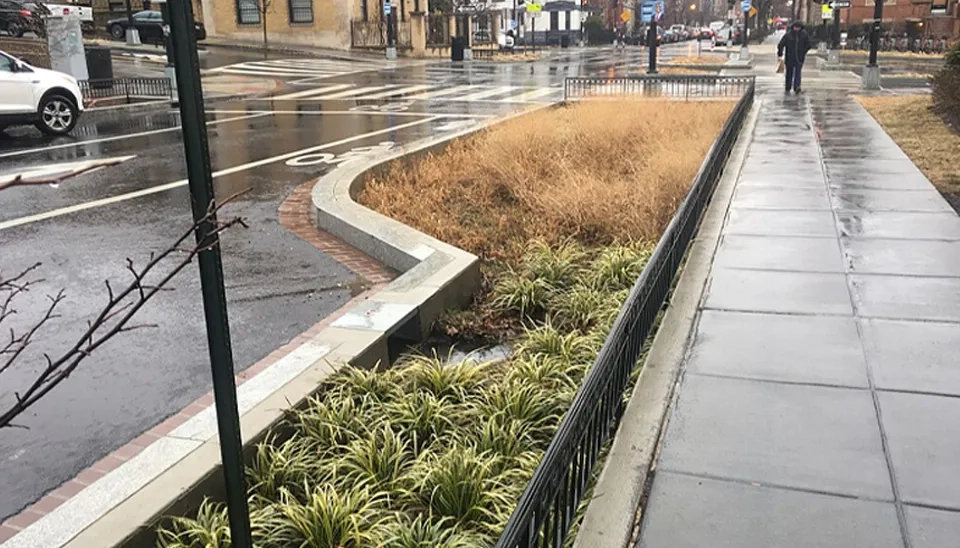
1.3. Permeable Pavement
Traditional impermeable pavement has several disadvantages, including poor drainage, high noise levels, unsafe driving conditions on rainy days, and significant temperature accumulation, all of which negatively impact driving safety and the urban ecological environment. Thus, the current road design strongly encourages the use of eco-permeable pavement materials. Since permeable pavements (also known as porous pavement) can allow water to pass through and reduce runoff volume, they are usually used as a low-impact development (LID) design for effective urban stormwater management (Fang et al. 2022).
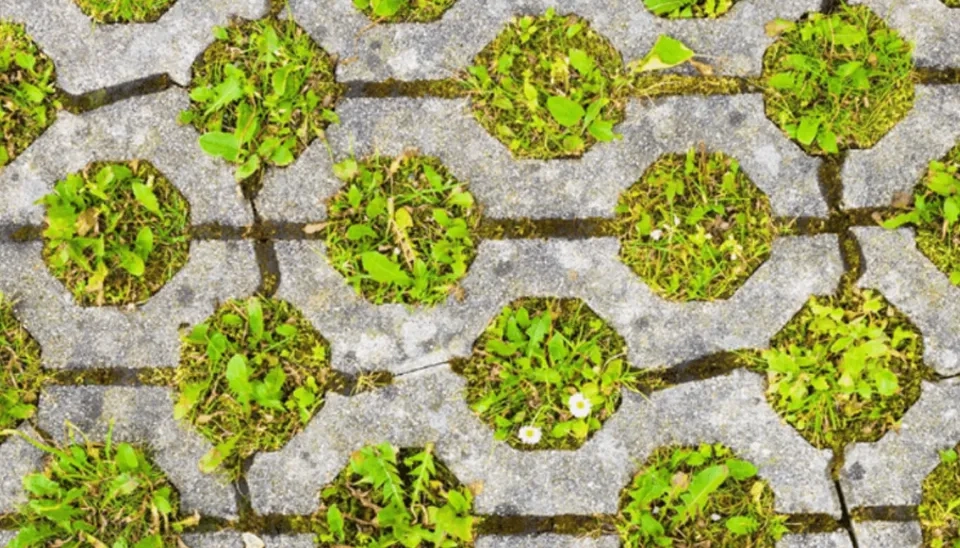
For permeable pavement to function effectively, many components must perform well, including the surface pavement’s structural integrity, its ability to handle traffic speed and loads, the entire pavement system’s ability to infiltrate and store stormwater, and the ability of the subgrade soil to infiltrate water. Generally, an optimal permeable pavement design has the storage volume, infiltration capacity, and the ability to improve water quality to achieve stormwater management objectives (Weiss et al., 2015).
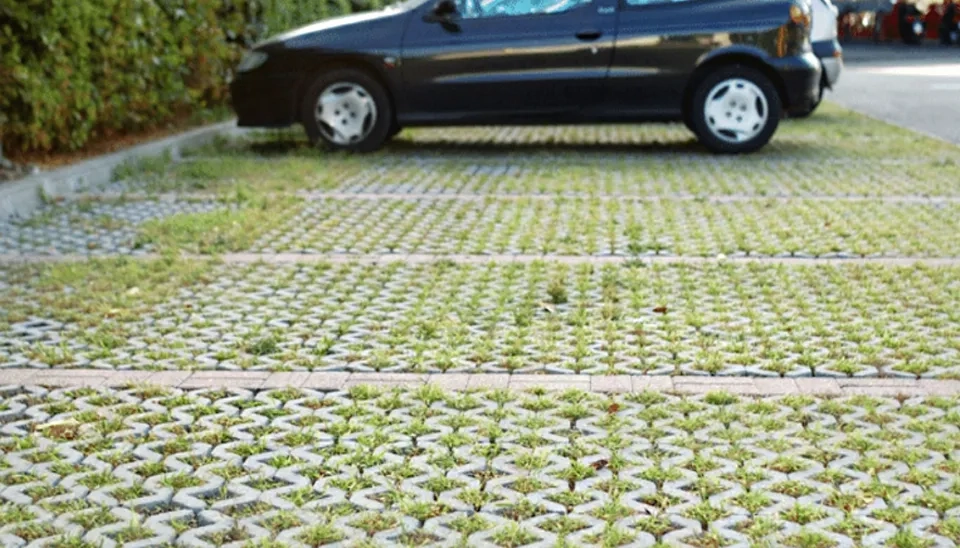
1.3.1. Application
Permeable pavement finds various applications in urban areas where sustainable urban stormwater management is crucial. Urban rainwater management widely uses it as a green infrastructure for water conservation. It can be used in parking lots, sidewalks, driveways, and low-traffic roadways. By allowing water to infiltrate, permeable pavement reduces stormwater runoff, which helps to prevent flooding and erosion. Moreover, it aids in the removal of pollutants and sediments from the stormwater. Additionally, permeable pavement assists in replenishing groundwater levels, contributing to the preservation of local water resources. Overall, the application of permeable pavement supports sustainable urban stormwater management by mitigating the negative impacts of stormwater runoff (Fang et al. 2022).
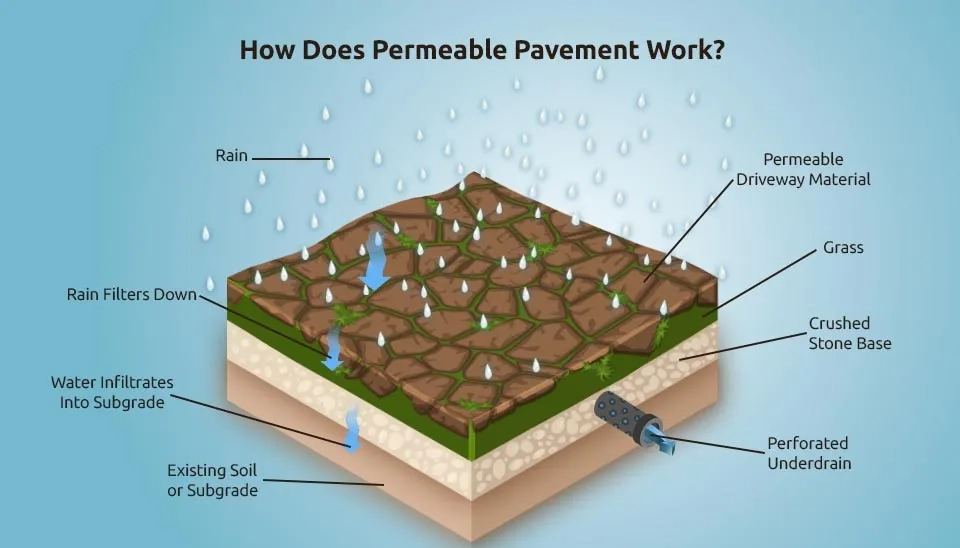
1.3.2. Advantages
Numerous benefits are expected after the installation of permeable pavements in urban areas, including purifying water quality, reducing traffic noise, alleviating Urban Heat Island (UHI), recycling waste materials, and reducing water spray and runoff volume. Potential negative impacts may include extra costs, moisture damage, and potential groundwater contamination (Weiss et al., 2015). Permeable pavements effectively alleviate urban flooding and the heat island effect by increasing rainwater infiltration, purifying surface runoff water, absorbing noise, and promoting evaporative cooling. Moreover, permeable pavements have significant implications for the urban hydrological cycle and human development that promotes ecosystem health (Zhou et al., 2024).
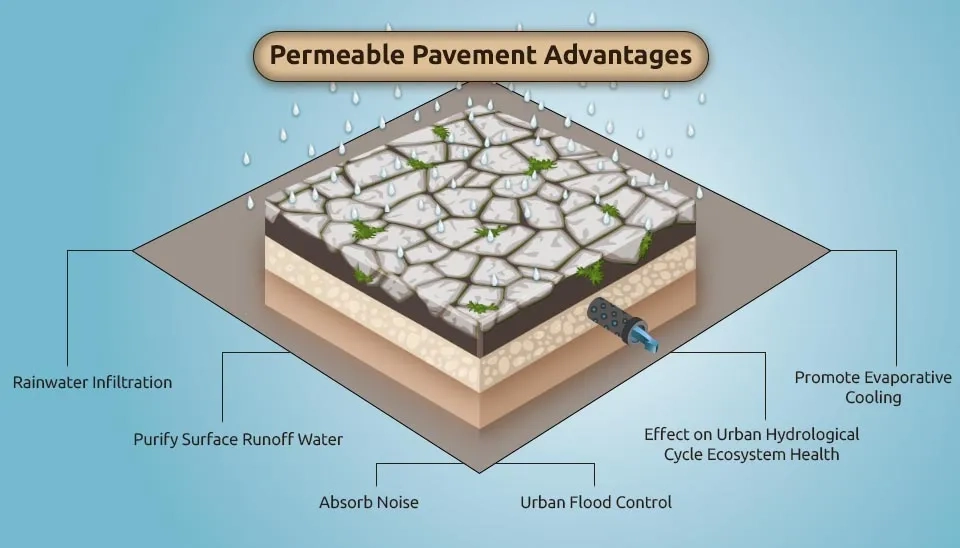
1.4. Green Roofs
Green roofs are vegetative systems installed on top of buildings that have significant potential for mitigating urban runoffs that create enormous environmental challenges. Green roofs offer a sustainable solution to mitigate the negative impacts of urban runoff, such as floods, water pollution, and deteriorating water quality. Green roofs are highly recommended BMPs that have gained increased recognition in urban design, especially in regions with frequent or intense rainfall events (Li and Yeung, 2014). The aesthetic values of green roofs and the possibility of applying them to create recreational spaces on building rooftops have boosted their growing popularity. Green roofs can collect up to 85% of the runoff, showing their enormous potential to lower the pressure on stormwater runoff systems (Hashemi et al., 2015; Tafazzoli, 2023).
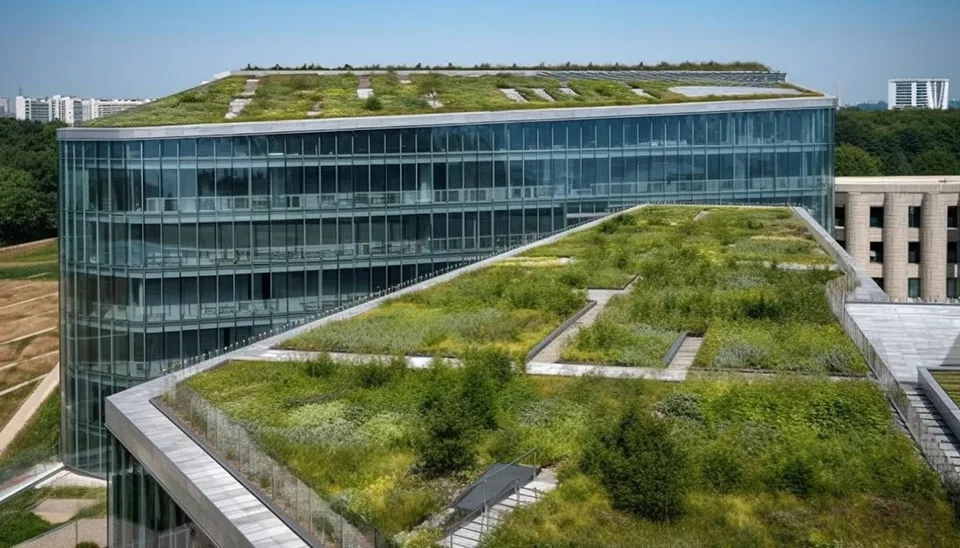
Green roofs contribute to the control of the runoffs through the two hydrological processes of retention and detention. Moreover, in summer, the evapotranspiration of plants on the roof can reduce the surface temperature, while in winter, it can delay the heat flow wave and minimize heat loss. A green roof consists of several layers, including vegetation (landscape materials), substrate (growth medium), filter layer, drainage layer (water storage), insulation, root barrier, and waterproofing membranes (prevent moisture from entering the building) (Jamei et al., 2021; Tan and Wang, 2023).

1.4.1. Applications
The major positive environmental impact of green roofs in urban areas is temperature reduction (Suter et al., 2017), due to mitigating the heat island effect. The shading, higher albedo, and evapotranspiration also contribute to their cooling impact, reducing the energy consumption required for cooling, as well as improving occupants' comfort (Saaroni et al., 2018). Another significant application of green roofs is their contribution to urban stormwater management. By absorbing rainwater and reducing runoff, green roofs help alleviate pressure on drainage systems, preventing flooding and reducing the risk of water pollution. Green roofs also contribute to urban biodiversity, creating habitats for various plant and animal species, particularly in densely populated areas (Kirshen et al., 2018; Tafazzoli, 2023).

1.4.2. Advantages
Green roofs offer various applications in rapidly growing cities, ranging from environmental to socio-economic benefits. The significant advantages of green roofs in urban catchments are the ability to mitigate the peak flow of stormwater runoff and the reduction in energy consumption by insulating the ceiling and minimizing the heat transfer from the roof (Hashemi et al., 2015).
1.5. Rainwater Harvesting
Rainwater Harvesting (RWH) is a sustainable technique that involves the collection, storage, and use of rainwater through rainwater collection systems such as water barrels, cisterns, and other water storage tanks. The principle behind rainwater harvesting systems revolves around utilizing rainfall as a valuable resource rather than allowing it to run off and be wasted. Rainwater harvesting is widely known as BMPs and by using this technique, rainwater can be collected from rooftops or other urban surfaces by constructing catchments, reservoirs, and channels using unsophisticated skills and technologies for further household uses. RWH can supplement both potable and non-potable water uses, but rainwater must be properly filtered and treated to be used for consumption to meet typical drinking water standards (Vargas, 2009; Nandi and Gonela, 2022).
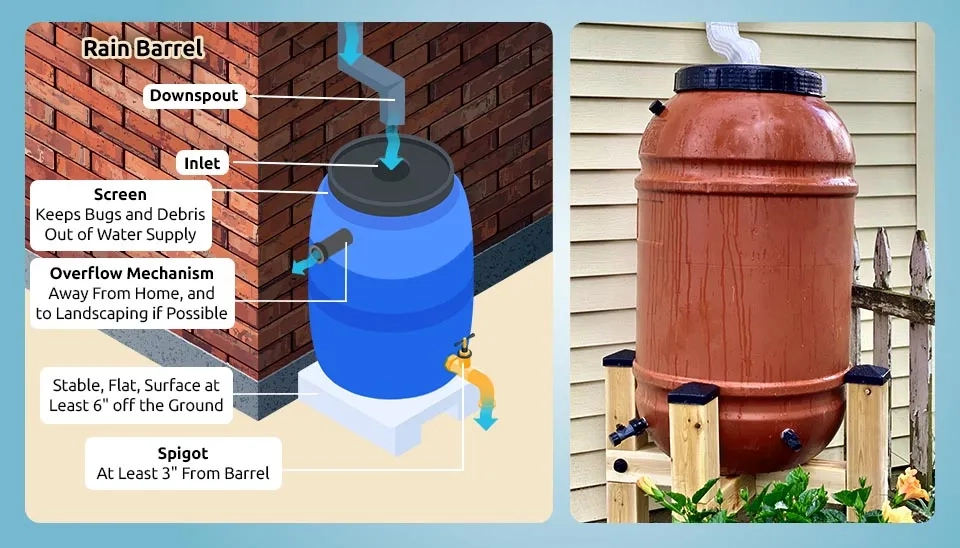
Rainwater harvesting in urban areas is not only diffusing in arid and semi-arid climates but also where water shortages are extreme. The harvested rainwater can then be used for various purposes, reducing the reliance on water resources. This GI stormwater control measure can serve to decentralize water supply and urban stormwater management, and communities can benefit from implementing rainwater harvesting as a stormwater control measure and as an alternative water source (Steffen et al., 2013).
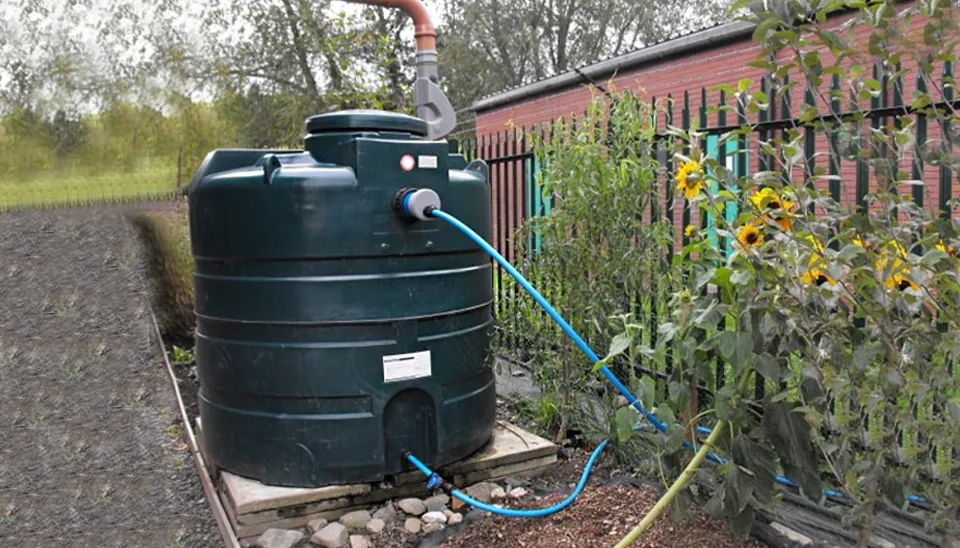
1.5.1. Applications
Rainwater harvesting finds extensive applications in different domains, primarily used for flood control, urban stormwater management, and other domestic and non-domestic needs. In domestic settings, the harvested rainwater can be used for non-potable purposes such as toilet flushing, laundry, washing, gardening, and outdoor cleaning. This application reduces the demand for treated water, resulting in water conservation and lower water bills. Industries and commercial buildings can also benefit from rainwater harvesting by implementing it for various processes, including cooling, irrigation, and manufacturing processes. RWH is also considered an effective adaptation measure for climate change effects in many regions (Steffen et al., 2013; Nandi and Gonela, 2022).
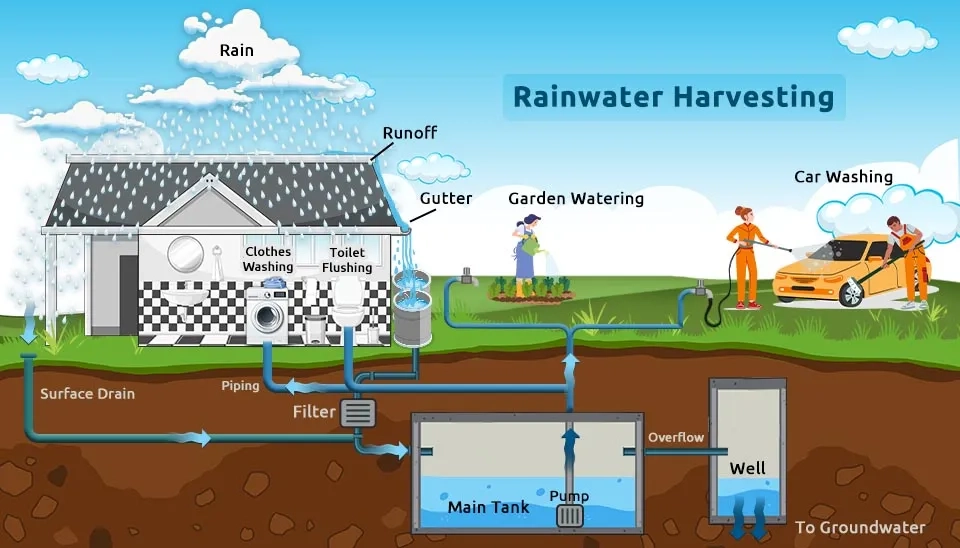
1.5.2. Advantages
Rainwater harvesting offers several economic, environmental, and social sustainability benefits, such as reducing freshwater production costs, decreasing ground and surface water contamination, peak discharge, controlling stormwater runoff volume in flood-prone regions, backup for emergencies such as peak water demand and fire, and, most importantly, creating jobs if included in widespread community development projects (Quinn et al., 2021). Results of a study indicate that in U.S. cities, rainwater harvesting can reduce stormwater runoff volume by up to 20% in semiarid regions (Steffen et al., 2013). Rainwater harvesting also decreases the demand for public water supplies, reducing the demand for new reservoirs and well construction (Vargas, 2009).
2. Other Urban Stormwater Management Techniques
There are six additional urban stormwater management techniques, including wet ponds, dry ponds, constructed wetlands, infiltration trenches, downspout planters, and enhanced tree pits. In the following sections, we will discuss these techniques.
2.1. Wet ponds
One of the recommended BMPs for urban stormwater management is the use of wet ponds. Wet ponds (also referred to as stormwater ponds, wet retention ponds, or wet extended detention ponds) are constructed basins that have a permanent pool of water throughout the year. Traditionally, wet ponds have been a common stormwater control in urban areas (EPA, 2021; Goorden et al., 2024).
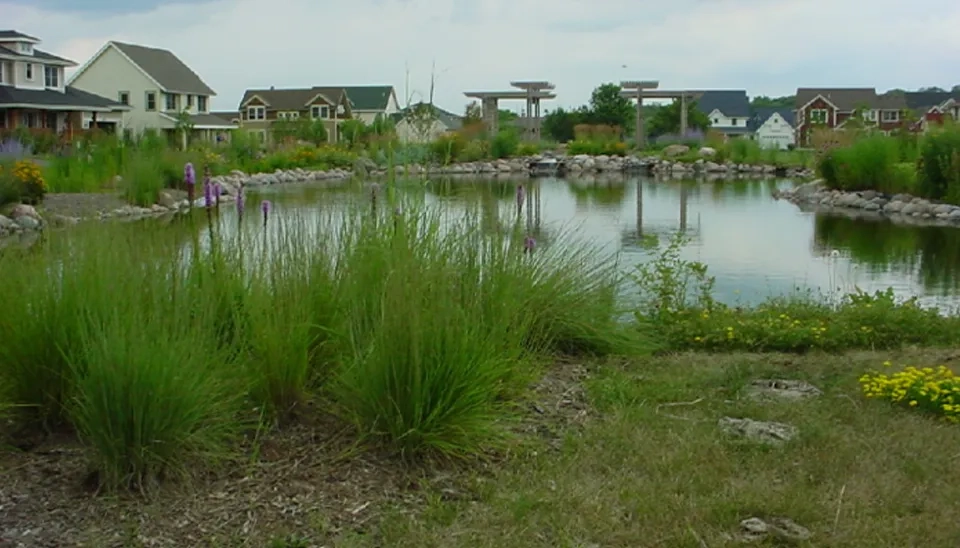
2.2. Dry ponds
Dry ponds (also called dry detention ponds, extended detention basins, detention ponds, and extended detention ponds) are one of the stormwater management systems. They are basins that detain stormwater for some minimum time (e.g., 24 hours) to allow particles and pollutants to settle and reduce peak flow rates. Given their limited ability to provide water quality treatment, dry ponds are less popular nowadays for flood control (EPA, 2021).
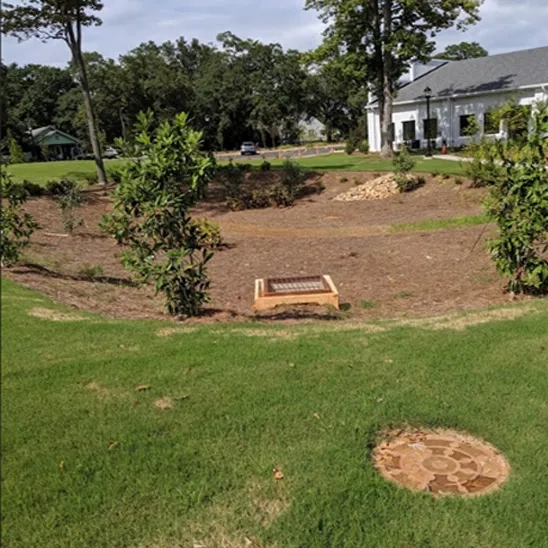
2.3. Constructed wetlands
Constructed wetlands (or Stormwater wetlands) are structural post-construction stormwater controls similar to wet ponds whose design incorporates shallow zones and vegetation. As stormwater flows through the wetland, the pollutants will be removed through settling and biological uptake. Constructed wetlands are important solutions in green infrastructure and offer aesthetic and habitat value in urban areas. Engineers design them specifically for stormwater treatment and pollutant removal, and they typically have less biodiversity (plant and animal species) than natural wetlands (Lucas et al., 2014; EPA, 2021).
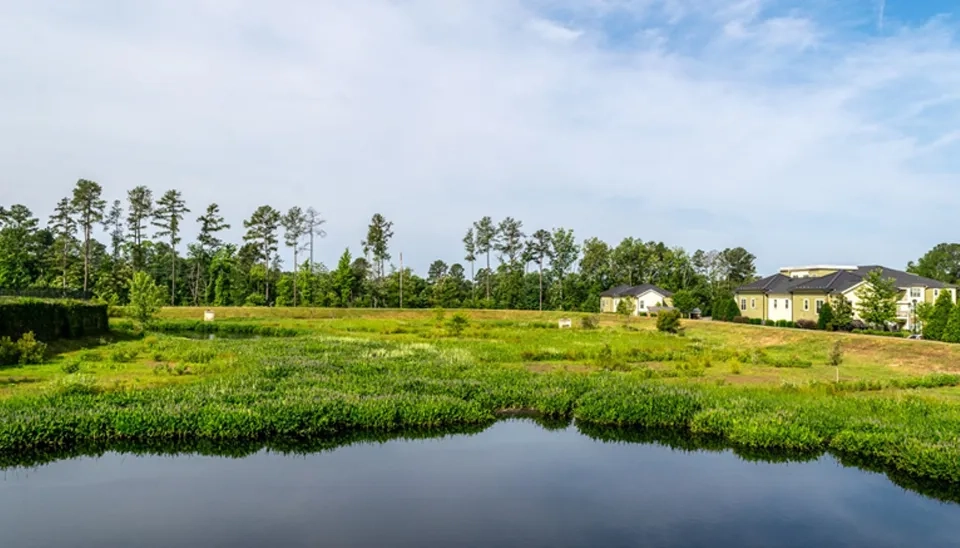
2.4. Infiltration trenches
Infiltration trenches are linear ditches, categorized as one of the infiltration-based LID measures. They are widely used to reduce runoff, collect rainwater, and improve water quality. Infiltration trenches usually consist of a gravel-filled trench that acts as a storage space for capturing runoff and allows stormwater to quickly soak into the ground. To reduce clogging, design engineers often use settling basins or other pretreatment components in conjunction with the infiltration trench (EPA, 2021; Wang et al., 2023).
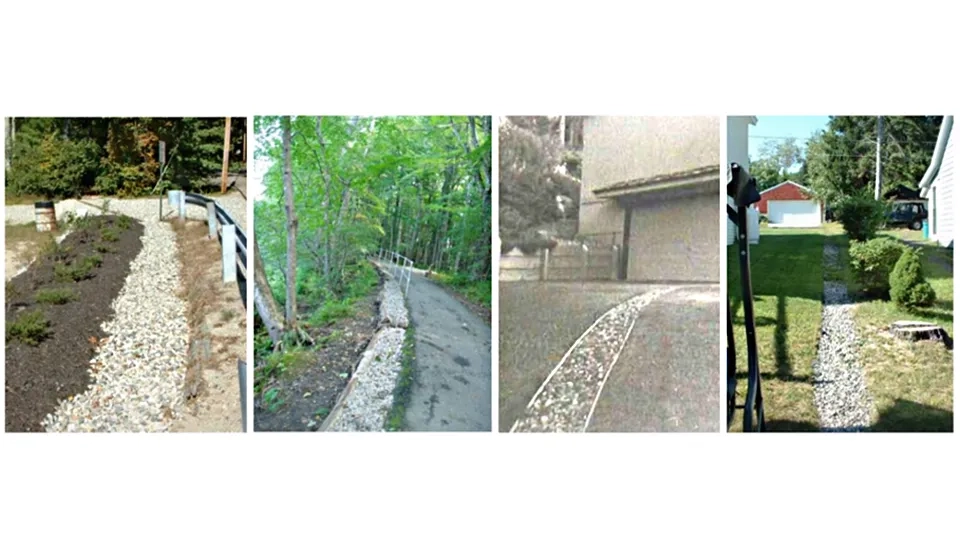
2.5. Downspout planters
Downspout planters are innovative systems designed to manage and utilize rainwater runoff. These planters are typically installed at the base of downspouts, where they intercept and redirect rainwater from rooftops, driveways, or other impervious surfaces. Downspout planters have a wide range of applications, particularly in urban areas where stormwater management is crucial (Conway et al. 2022).

2.6. Enhanced Tree Pits
Enhanced tree pits collect rainwater by diverting runoff from the street into a cut in the curb. Enhanced tree pits, also known as tree pit systems, are advanced urban landscaping techniques that aim to optimize the growth and health of trees in urban environments (Jim, 2022). Enhanced tree pits find application in various urban settings, ranging from city streets and sidewalks to parks and public spaces. The specialized structures within the tree pits facilitate efficient urban stormwater management, nutrient uptake, and root expansion.
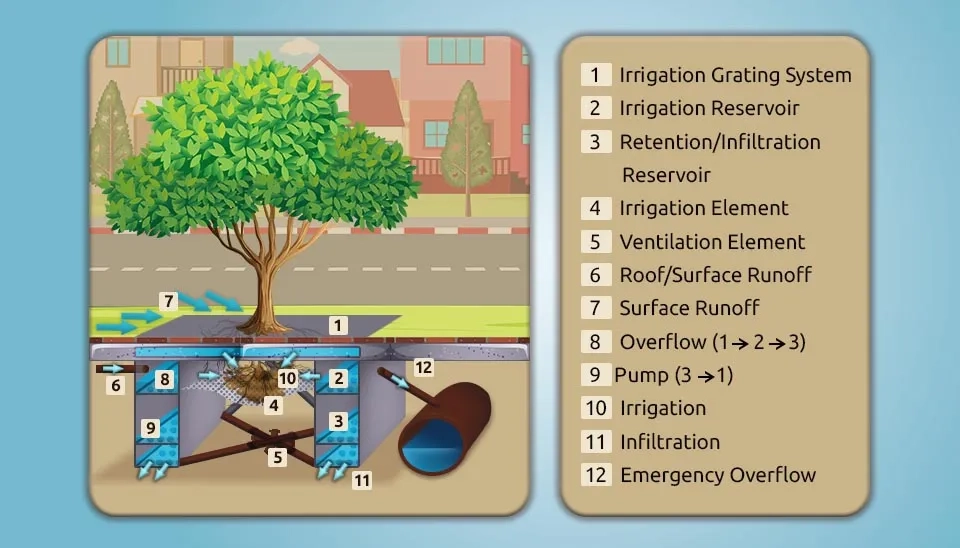
This type of infrastructure not only supports the growth and development of the trees but also contributes to the overall urban ecosystem by mitigating stormwater runoff, reducing soil erosion, and improving air quality (Schaffert et al. 2022). Stormwater tree pits with storage elements enable the irrigation of urban trees and can potentially act as decentralized rainwater retention basins (Siering and Grüning, 2023).
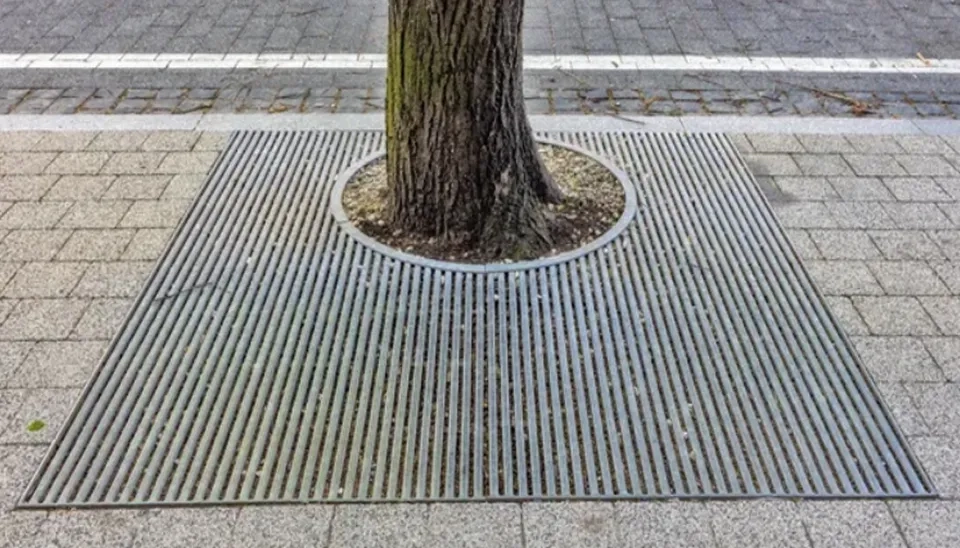
Conclusion
Urban stormwater management is a complex and multifaceted issue that requires a holistic and integrated approach. There are several alternative techniques for managing urban stormwater, including BMPs, GI, LID, SUDS, and WSUD. Urban planners, designers, and engineers need to be familiar with the concepts related to urban drainage and stormwater management to effectively manage urban water resources and protect the environment. The implementation of different techniques such as the construction of rain gardens, bioswales, permeable pavements, green roofs, RWH systems (e.g. rainwater barrels and cisterns), wet and dry detention ponds, constructed wetlands, infiltration trenches, downspout planters, stormwater tree pits, etc., is essential for sustainable urban stormwater management. By using these techniques, communities can reduce the amount of stormwater runoff that enters the sewer system, reducing the risk of flooding and preserving water sources. These green infrastructure and LID practices can also help to improve water quality by filtering pollutants from stormwater runoff before entering local water bodies.